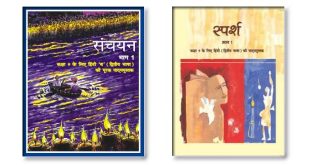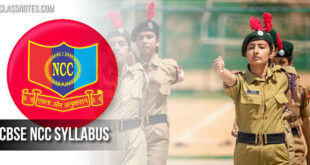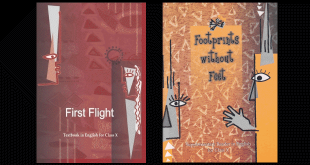CBSE Syllabus Class 9 English Communicative 2025-26: Studying Jane Austen is English Language and Literature, whereas learning how to be Jane Austen is English Communicative. CBSE has included English Communicative subjects to help students understand the practicality of the language in daily life for effective communication. Students who want a holistic language understanding can opt for the subject.
CBSE Syllabus Class 9 English Communicative 2025-26
Mastering a language goes beyond memorising grammar rules and vocabulary; it’s about using it effectively in real-life situations. The CBSE Class 9 English Communicative syllabus is designed to enhance students’ reading, writing, speaking, and listening skills, ensuring they can express themselves fluently and confidently.
For the 2025-26 academic session, CBSE has structured the syllabus to provide a balanced mix of reading comprehension, creative writing, grammar, and literature, helping students develop both accuracy and fluency. This subject is an excellent choice for learners who want a practical understanding of English for everyday communication. In this blog, we provide a detailed breakdown of the syllabus. Stay updated with the latest curriculum to prepare effectively for your exams!
Paper Design Class 9 English Communicative
| Sections | Competencies | Weightage (%) |
| Demonstrative Knowledge + Understanding |
(Knowledge – based simple recall questions, to know specific facts, terms, concepts, principles or theories, identify, define, or recite, information, comprehension – to be familiar with meaning and to understand conceptually, interpret, compare, contrast, explain, and paraphrase information) | 30% |
| Conceptual Application | (Use abstract information in concrete situation, to apply knowledge to new situations, and use the given content to interpret a situation, provide an example or solve a problem) | 35% |
| Analysis, Evaluation and Creativity | Analysis & Synthesis – classify, compare, contrast, or differentiate between different pieces of information; organise and / or integrate unique pieces of information from a variety of sources. | 35% |
| TOTAL | 100% | |
Class 9 English Communicative Blueprint
Some students opt for English Communicative whereas some opt for CBSE English Literature and Literature which can be prepared using the NCERT books. From the table below, understand the exam pattern and the types of questions they can find in the final examination.
| Section | Topics | Marks |
| A Reading Skills | Literary / Factual / Discursive Passage | 20 |
| Objective Type and Very Short Questions | ||
| B Creative Writing Skills | Notice Writing | 24 |
| Informal Letter | ||
| Dialogue Writing | ||
| Paragraph (from Main Course Book) | ||
| C Grammar | Tenses | 10 |
| Modals, Subject – Verb Concord, Reported Speech, Commands and Requests, Statements, Questions | ||
| Clauses: Noun, Adverb and Relative | ||
| Determiners | ||
| D Literature Textbook | Reference to the Context. | 26 |
| Short Answer Questions | ||
| Long Answer-type Questions | ||
| Internal Assessment Pen Paper Test + Multiple Assessment + Portfolio + Subject Enrichment (Listening and Speaking Skills) |
20 | |
| TOTAL | 100 | |
CBSE Class 9 English Communicative Syllabus 2025: Structure
The syllabus for English Communicative is categorised into four sections- Reading, Writing, Grammar, and Literature.
Section A: Reading Skills
- The section will have two unseen passages with a maximum word limit of 600 words. The passages can be of any two types out of the following: literary/factual/discursive. Please refer to the Main Course Book.
- Objective Type Questions (including Multiple Choice Questions), and Very Short Answer Type Questions will be asked to test inference, evaluation, analysis and vocabulary in context.
Section B: Writing Skills
This section will have a variety of short and long writing tasks.
- Notice Writing for school assembly/ Resident Welfare Association/ School Events/ Classroom information etc. (maximum 50 words)
- Dialogue Writing, (maximum 100 words)
- Informal Letter (maximum 120 words)
- Paragraph on one out of two themes from the Main Course Book, based on verbal or visual cues (maximum 150 words)
Section C: Grammar Skills
Grammar items will be taught and assessed over some time.
- Tenses
- Modals
- Subject-verb concord
- Reported Speech
- Commands and Requests
- Statements
- Questions
- Clauses:
- Noun clauses
- Adverb clauses
- Relative clauses
- Determiners
The above items may be tested through test types as given below:
- Gap filling
- Editing or Omission
- Sentence reordering or Sentence Transformation in context.
Section D: Literature Skills
Two out of three extracts from prose/poetry for reference to the context. Very Short Answer Questions and Short Answer Questions will be asked to assess local and global comprehension, interpretation and analysis.
Six Short Answer Questions out of seven from the Literature Reader, to test local and global comprehension of themes and ideas, analysis and evaluation (30-40 words each)
One out of two long-answer type Questions to assess how the values inherent in the text have been brought out. Creativity, imagination and extrapolation beyond the text and across the texts will be assessed. This can also be a passage-based question taken from a situation/plot from the texts. (120 words).
 Class Notes NCERT Solutions for CBSE Students
Class Notes NCERT Solutions for CBSE Students





